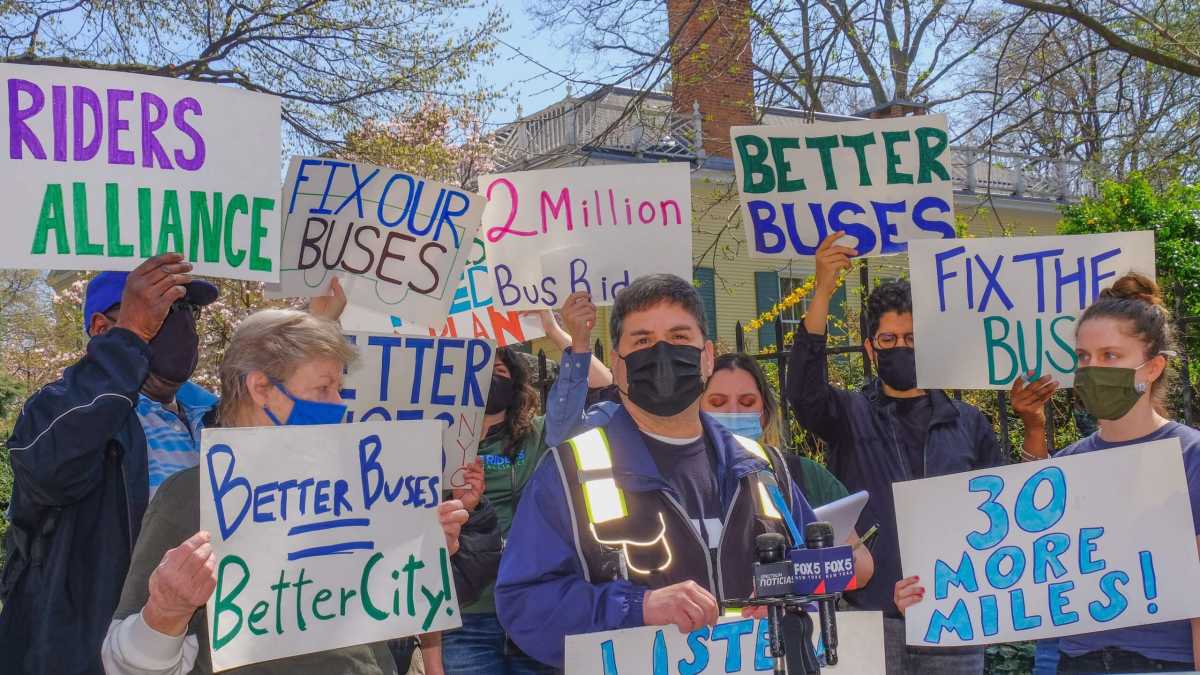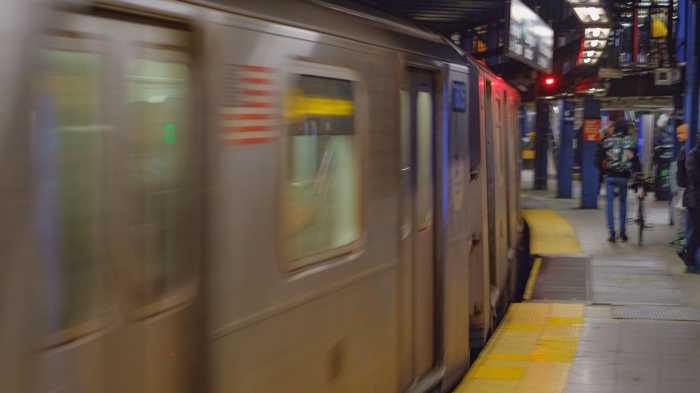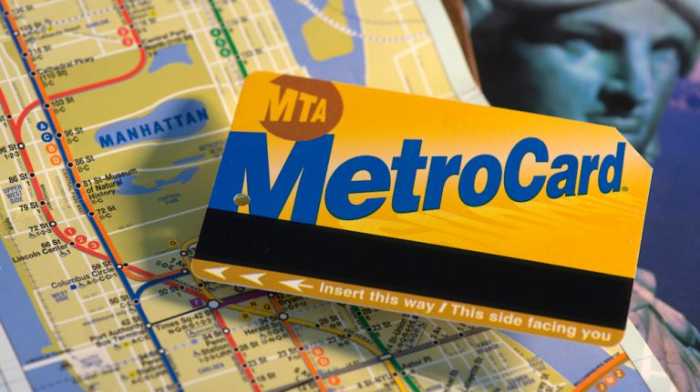Transit advocates are putting pressure on Mayor Bill de Blasio to expand bus lanes across the city by 30 miles to speed surface transportation for up to 2 million daily riders by pre-pandemic numbers.
Riders Alliance, Transport Workers Union Local 100 members and other organizations painted a mock bus lane on paper in front of Gracie Mansion on Wednesday asking the Mayor’s Office to act as ridership on MTA systems across the board continue to rise.
“For decades, New Yorkers have experienced poor and unreliable bus service that has slowed down around 2 million people who depend on the bus every day. Through grassroots organizing, we made the case that our buses need to turn around. In 2019, Mayor de Blasio made a promise to speed up buses by 25% and end the tale of two cities by 2020. Unfortunately, that promise has not been met,” Jolyse Race with Riders Alliance said.
The city Department of Transportation touted about 16.3 miles of bus lanes having been launched near the end of 2020. Before this, the record for bus lane rollout was about 13 miles.
“This administration installed the most bus lanes in the history of the city last year, amid a pandemic and fiscal crisis,” mayoral spokesperson Mitch Schwartz said. “These projects really work – as early returns from the busways on Jay Street and Flushing-Main St have proven already – and we’ll have more to share soon on our plans to build on that progress this year.”
The mayor’s office viewed the call for 30 miles of bus lane an unprecedented ask that exceeds their biggest efforts in the past.
“We are here today to call on Mayor de Blasio to complete his promise before his mayoral term ends, speeding up bus service has always been important, but this year it has become even more critical as buses have been the main source of transportation for essential and frontline workers,” Race continued. “Reports have shown that bus ridership has surpassed subway riders through the pandemic, and still is today.”
On April 7, the MTA counted about 1,155,405 swipes on buses citywide representing a new high since fares began being collected again in September 2020 and more than half of pre-pandemic ridership numbers. On subways, buses and Staten Island Railway, the MTA reported a total of 3,131,233.
“There has never been a more urgent time for the city to prioritize public transit as traffic congestion is on pace to exceed pre-pandemic levels. INRIX now ranks New York City as the most congested city in the country,” Liam Blank, Policy Director for the Tri-State Transportation Campaign, said. “We cannot afford to have buses and the millions of New Yorkers who rely on them to be stuck in traffic, especially as the city’s economy reopens. New York City bus riders are predominantly low income, people of color and immigrants. These are people with the longest commute times, and who are at the greatest risk of suffering the worst effects of the pandemic in the financial crisis.”
Willie Rivera from TWU Local 100 pointed out that the city and state had received money from the federal government to make up for losses incurred from handing the COVID-19 pandemic and that spending that on services for essential workers and New Yorkers heading to vaccination sites would continue to be critical as the health crisis abates.































